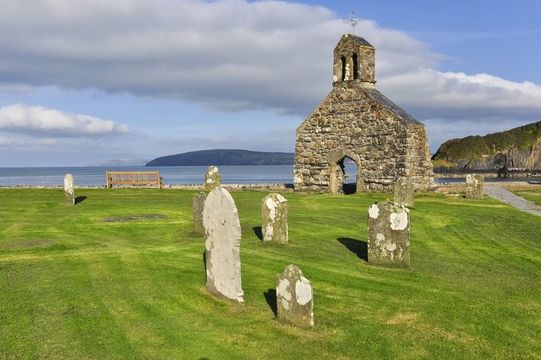
PembrokshireGetty: Images
Sand dunes have ensured that this medieval cemetery has remained intact for so long
Whitesands Beach in Pembrokeshire, Wales is the home to almost 200 skeletons that have been discovered by archaeologists in the area.
The skeletons have been traced back to the medieval era and have been protected by several sand dunes located by the beach.
BBC News has reported that the skeletons have been exhumed and will be stored at the National Museum of Wales.
Archaeologist Jenna Smith took the time to speak about the discovery to BBC News. She said "It’s really important because the preservation of the bones, as they are in sand, is absolutely incredible. It’s really important that we do so because it gives that snapshot in time which we don’t normally get in Wales. The bone doesn’t normally exist."
The burial site was initially home to a medieval trading post with Ireland. A statement, was released by the archaeologists from the University of Sheffield and the Dyfed Archaeological Trust—a nonprofit organization that seeks to protect and record archaeological finds in Wales—that detailed how the remains were recovered during a six-week dig at the St. Patrick’s Chapel site. The team hopes to finish excavating the area before coastal erosion washes potential finds away.
Radiocarbon analysis was used to determine that the cemetery was used between the 6th and 11th centuries.
In recent years, erosion has caused huge amounts of damage to the coastline, and has helped to expose several of the burial sites.
“We are so close to the coast,” says Community Archaeologist Tomos Ll. Jones in a video posted on Facebook. “And so it makes that point again of why it’s so important that this excavation is taking place. Once erosion happens it’s likely that this site will be lost, and if this excavation wasn’t taking place, then all that information that we’re unlocking would’ve been lost as well.”
Attempts to preserve the burial grounds have not proved particularly successful due to the severe weather.
There is, however, still work to be done, according to the Dyfed Archaeological Trust, who released a statement saying "There is still a significant amount of evidence left to excavate, including an intriguing stone structure which pre-dates the burials."
Erosion threatens to destroy the medieval burial ground at Whitesands Beach in Pembrokeshire. https://t.co/8PLKSJdAsi
— Smithsonian Magazine (@SmithsonianMag) July 6, 2021





Comments